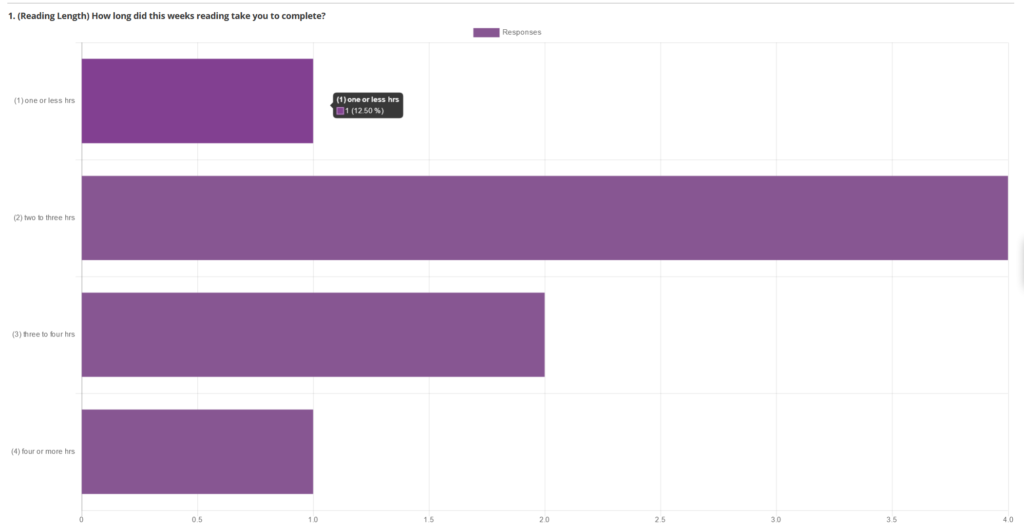When in the same room at the same time as students in a traditional face-to-face class, experienced instructors may use an array of techniques to measure student engagement and efficacy. It may be immediately apparent if a new concept has just gone way over the heads of most of the class, or if an individual student is checked out on a particular day. Appropriate interventions can be made quickly before it’s too late. But when you teach an online class, how do you really know if your students are “getting it?”
When online, we can’t observe things like eye contact, body language, facial expressions, or the quality of in-class discussions. We must find other ways to “read the room” and provide meaningful feedback to students early and often. Instructors need to learn a different way of operating, and must be adept and comfortable interacting with students through technological mediums. This article offers some Moodle-specific tips that can help instructors improve their practice.Check the Course Reports
 One of the simplest things you can do is simply checking and making sure that students are regularly logging in. To do this, access the Participants screen for a quick view of your class roster, which will show you the last time each student logged in.
For more detailed information, go to Course Administration >Reports. You’ll find searchable logs of all interactions students have made with the course. You can see a list of all activity or filter to see specific students, days, or Moodle items (this can be helpful to vet student stories about missing work).
One of the simplest things you can do is simply checking and making sure that students are regularly logging in. To do this, access the Participants screen for a quick view of your class roster, which will show you the last time each student logged in.
For more detailed information, go to Course Administration >Reports. You’ll find searchable logs of all interactions students have made with the course. You can see a list of all activity or filter to see specific students, days, or Moodle items (this can be helpful to vet student stories about missing work).

Enable Completion Tracking
 To provide further opportunities for tracking milestones and progress, you can enable Completion Tracking on the Edit Settings screen of your course. Completion Tracking allows you to set criteria for each item in your course to determine if a student has completed it. For example, a link or page might be considered complete simply by a student clicking on it; a quiz or assignment might require a passing grade to be entered before it is considered complete. You can also allow learners to manually check off completed items. This can give students some assistance in planning, organizing, and assessing their own progress in the course.
To provide further opportunities for tracking milestones and progress, you can enable Completion Tracking on the Edit Settings screen of your course. Completion Tracking allows you to set criteria for each item in your course to determine if a student has completed it. For example, a link or page might be considered complete simply by a student clicking on it; a quiz or assignment might require a passing grade to be entered before it is considered complete. You can also allow learners to manually check off completed items. This can give students some assistance in planning, organizing, and assessing their own progress in the course.

Digital Exit Slips
 The use of exit slips is a popular methodology in face-to-face classrooms to capture a snapshot of student understanding at the end of each session. Styles vary widely from simple multiple choice queries or polls to open-ended reflection, but in general, exit slips should be concise and aimed at weighing students’ understanding and comfort level with the material. (Schaaf, 2016)
There are many tools that allow instructors to use exit slips in an online format. Moodle includes a basic Feedback activity that is a great way to experiment with digital exit slips. Questions can be arranged and presented in a variety of formats, and responses can be anonymous or attributed. Once students respond, you can display the class results with a striking chart (or leave them hidden).
The use of exit slips is a popular methodology in face-to-face classrooms to capture a snapshot of student understanding at the end of each session. Styles vary widely from simple multiple choice queries or polls to open-ended reflection, but in general, exit slips should be concise and aimed at weighing students’ understanding and comfort level with the material. (Schaaf, 2016)
There are many tools that allow instructors to use exit slips in an online format. Moodle includes a basic Feedback activity that is a great way to experiment with digital exit slips. Questions can be arranged and presented in a variety of formats, and responses can be anonymous or attributed. Once students respond, you can display the class results with a striking chart (or leave them hidden).

Frequent, Low-Stakes Grading
 For online teaching, Dr. Scott Warnock of Drexel University proposes a strategy he calls “Frequent, Low-Stakes Grading.” This method offers a variety of benefits, including building learner confidence, an increase in student motivation, and the creation of a steady teacher-student dialogue, which is especially important in an online environment. As the name suggests, the crux of the method is the inclusion of more graded, but low-stakes tasks spread throughout the term. Typically, these take the form of posts on discussion forums, journaling or reflective writing, or short quizzes.
One common concern with this methodology is that the increased grading workload could be arduous for faculty. But as Warnock points out, tools embedded in online classrooms can help streamline and simplify instructor workflows to offset the increased amount of work and grading. For example:
For online teaching, Dr. Scott Warnock of Drexel University proposes a strategy he calls “Frequent, Low-Stakes Grading.” This method offers a variety of benefits, including building learner confidence, an increase in student motivation, and the creation of a steady teacher-student dialogue, which is especially important in an online environment. As the name suggests, the crux of the method is the inclusion of more graded, but low-stakes tasks spread throughout the term. Typically, these take the form of posts on discussion forums, journaling or reflective writing, or short quizzes.
One common concern with this methodology is that the increased grading workload could be arduous for faculty. But as Warnock points out, tools embedded in online classrooms can help streamline and simplify instructor workflows to offset the increased amount of work and grading. For example:
- Forums are a great place for informal, frequent writing assignments. Instructors can use auto-created groups and ratings to simplify organization and assessment workloads.
- Assignments activities can be used in place of forums when communal writing is not appropriate. To keep things simple and to the point, the assignment can be configured for Online text submissions instead of files, and a maximum word count can be established. The use of rubrics can make grading faster and more consistent.
- Quizzes can also be a very effective formative assessment. It can take a bit of up-front effort to create a rich question bank in Moodle, but this work can be eased by importing questions from a text file or even from a textbook publisher–provided bank in some cases. Once created, quizzes will be automatically marked. Students can review their attempts and see any feedback on their own schedules. Since these quizzes are about gauging and building understanding, they may be ungraded, or multiple attempts may be allowed.
Offer Digital Office Hours
 Although it’s not always possible for online students to be available at the same time (flexibility is an important part of online learning after all), sometimes it can be very helpful to meet with students in real time. Moodle provides a Chat activity that can act as a space for synchronous one-one-one or group conversations. Chats can be scheduled daily or weekly to act as virtual office hours, and the chat logs can optionally be made available for other students to review afterwards.
It can be an adjustment learning to build community in an online class - the first step is in becoming comfortable with the tools you need to discover the data and create opportunities for engagement.
Although it’s not always possible for online students to be available at the same time (flexibility is an important part of online learning after all), sometimes it can be very helpful to meet with students in real time. Moodle provides a Chat activity that can act as a space for synchronous one-one-one or group conversations. Chats can be scheduled daily or weekly to act as virtual office hours, and the chat logs can optionally be made available for other students to review afterwards.
It can be an adjustment learning to build community in an online class - the first step is in becoming comfortable with the tools you need to discover the data and create opportunities for engagement.
References
- Schaaf, Ryan. “10 Smart Tools For Digital Exit Slips." TeachThought, 22 Aug. 2016, www.teachthought.com/technology/smart-tools-for-digital-exit-slips/.
- Warnock, Scott. “Frequent, Low-Stakes Grading: Assessment for Communication, Confidence.” Faculty Focus | Higher Ed Teaching & Learning, 8 Apr. 2013, www.facultyfocus.com/articles/educational-assessment/frequent-low-stakes-grading-assessment-for-communication-confidence/.
Image Credits
- Featured Image: Photo by John Schnobrich on Unsplash
- Icons: made by Smashicons & Vectors Market from www.flaticon.com licensed by CC 3.0 BY